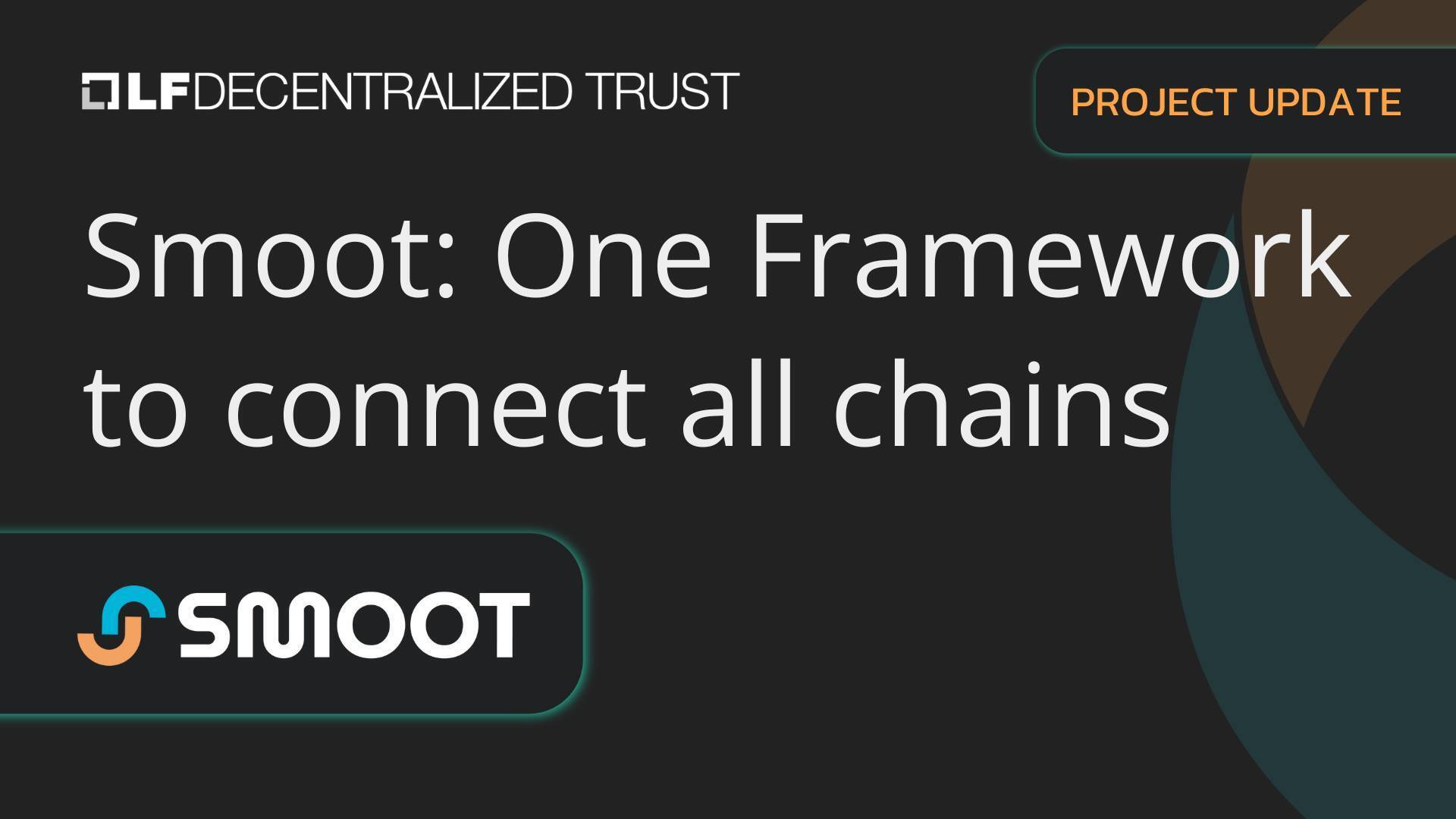Meet Smoot: One Framework to Connect All Chains

In 1958, Oliver R. Smoot, a student at MIT, was famously used as a human measuring stick to measure the length of the Harvard Bridge. Smoot, measuring a mere 5 foot 7 inches (1.70 m), would lay down on the bridge as his associates noted his position. It took a fair bit of time to measure the bridge as Smoot had to be carried by his associates to each new position – but the effort was well worth it. Thus, a playful, unconventional unit of measure was born. Over the years, smoot is remembered as a symbol of creativity, collaboration, and the unique quality of grassroots development.
Today, that spirit lives on in Smoot, a new interoperability project from the Linux Foundation Decentralized Trust (LF Decentralized Trust), the premier open source foundation for decentralized technology ecosystems. It is a contribution from Wanchain, a global leader in decentralized blockchain interoperability and creator of the blockchain industry’s first decentralised cross-chain bridge. With Smoot, the LF Decentralized Trust and Wanchain are setting the stage for a more connected, decentralized, open source future.
About Smoot
Built with care by the Wanchain team and released to the open source community, Smoot is a modular, reusable, vendor-agnostic interoperability framework for homogeneous and heterogeneous chain-to-chain interactions. Compliant with the Enterprise Ethereum Alliance (EEA)’s DLT Interoperability Specification, Smoot reflects a shared vision for a more open and connected decentralized future.
"At the EEA, we’re proud to see our interoperability specifications play a foundational role in the Smoot project,” said Redwan Meslem, Executive Director, Enterprise Ethereum Alliance. “This instantiation within an LF Decentralized Trust project is a testament to the growing importance of open standards and cross-ecosystem alignment. It underscores the EEA’s mission: enabling Ethereum’s enterprise adoption through pragmatic, interoperable frameworks that connect diverse stakeholders across public and private blockchain networks."
Figure 1: The three layers of Smoot
At its core, Smoot is a modular framework built around three layers (Figure 1):
- The Smoot Messaging Layer – The Smoot Messaging Layer facilitates the secure exchange of data between distinct decentralized networks while ensuring data integrity and validity at every step.
- The Smoot Function Call Layer – The Smoot Function Call Layer enables the uninterrupted execution of operations across multiple distinct decentralized networks, removing barriers between chains.
- The Smoot Application Layer – The Smoot Application Layer orchestrates complex logic and workflows across distinct decentralized networks, unlocking unified cross-chain experiences.
Smoot’s modular design isn’t just about structure – it’s about freedom. The same codebase is reusable across multiple blockchains with minimal tweaks. As a vendor-agnostic framework, Smoot supports decentralized networks with diverse underlying technologies while avoiding the fragmentation caused by conflicting vendor implementations. Smoot also protects against vendor lock-in!
“Interoperability solutions are self-defeating if they simply re-fragment the blockchain landscape,” said Temujin Louie, CEO of Wanchain. “By contributing Smoot to the open source community, we’re tackling the problem of vendor lock-in head on. The future of interoperability lies in open collaboration, not in closed, proprietary products.”
Smoot isn’t just tech. As a community-based open source implementation of a standards-compliant interoperability framework, Smoot promotes collaboration, unity, innovation, and diversity while ensuring that the framework remains open, unique, and secure.
Figure 2: The Smoot Component Architecture
Smoot’s modular, layered design ensures that contributors can independently develop customised components without dependency. Smoot’s component architecture (Figure 2) supports a wide range of off-chain relayers, including multisig, multi-party computation (MPC), zero-knowledge proofs (ZKP), light clients, and hybrids. Smoot also accounts for different smart contract languages across both public and private chains, EVM or non-EVM alike.
Whether for data transfers, asset transfers, or command transfers, Smoot supercharges cross-chain applications while freeing developers to focus on their users.
With thousands of distinct decentralized networks already in the wild, a modular, vendor-agnostic interoperability framework for homogeneous and heterogeneous chain-to-chain interactions, like Smoot, is crucial. Together, LF Decentralized Trust and Wanchain are laying the foundation for a future that’s truly connected, decentralized, and built together.
"An open, interoperable infrastructure is critical to the move to a digital-first economy," said Daniela Barbosa, LF Decentralized Trust's Executive Director. "As a standards-based framework for bridging networks and applications across chains, Smoot aims to be a critical piece of that infrastructure. Engaging the LF Decentralized Trust community to openly develop Smoot puts it on the path for neutrality, flexibility, and innovation, key requirements for industry-wide adoption."
Get Involved with Smoot
As a LF Decentralized Trust project, the Smoot community is open to all. We invite blockchain developers, enterprises, corporations, consortiums, industry alliances and anyone else to participate in the growth of this project. There are many ways to get involved:
- Join the Smoot Technical Steering Committee;
- Contribute to the Smoot Codebase;
- Support the Smoot Community; or
- Leverage Smoot in your products
Find us on the #smoot-general channel on Discord or at our community call on every other Wednesday. Explore the code and engage with Smoot on GitHub. To learn more about Smoot, join an online meetup on Monday, June 11 at 8 AM Pacific.
And, for those curious, the Harvard Bridge is 364.4 smoots ± 1 εar long.
